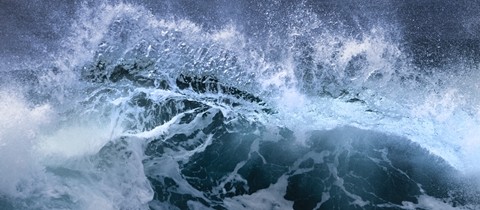
The installation of offshore wind turbine components has traditionally been limited by metocean factors such as spudcan impact during jacking, crane dynamic amplification factors and, of course, wind effects.
Now, a new range of modern, larger jack-up vessels has entered the market, bringing higher jacking windows and heavier cranes. At the same time, foundation sizes are increasing, with the market moving to larger, higher capacity turbines.
Wind during installation can have a big impact on blade installation activities. And this impact will only increase as blades become larger.
Calculating drag loads
In an effort to understand the implications of handling larger blades in various wind conditions, we have completed a basic assessment. In Table 1, you can see the impact on drag loads of increasing hub height, swept area and blade size, normalised to the 5MW turbine.

Table 1 Drag load impact of increasing hub height, swept area and blade size (normalised to a 5MW turbine)
The increased drag loads will result in increased difficulties for the crew to attach the blade or rotor connection to the nacelle or hub flange.
These figures indicate that the effective wind speed at a height of 10m would need to be significantly lower, based on a comparison using similar methodology and tools. This implies a much shorter installation window.
Ideal blade pitch position
Based on the drag relations shown in Table 1, it may be necessary to reduce the drag load by pitching the blades to a greater degree. However, in some circumstances, this can have an even more negative effect on the hub-flange excitation. This is due to the alternating effect of the lift forces where there are small changes in the angle of attack.
Initial minimisation studies performed in the analysis of installation of a 5 MW rotor produced interesting results.
Ideally, a pitch position should be adopted that results in minimum hub-flange excitation. At this point, drag is minimal and the lift occurs steadily in one direction and does not alternate according to motion and spatial wind variations.
Typically, it should be pitched at about 10-20 degrees of the neutral lift angle. Notice, however, that this implies near maximum drag loads when the rotor is lifted from the deck in horizontal position, albeit at lower wind speeds.
Vessel workability
These wind effects have a drastic impact on the workability of the vessel and the operation.
The figures in Table 1 are based on a reasonably typical wind speed limit (at 10m height) of 12 m/s. This is usually in the steepest part of most wind speed histograms, depending on location. Numerical data on hub-flange excitation during lifts is not currently available.
Figure 1 (from Green Power Development) shows the drastic impact this has on the workability of the vessel and operation.
Figure 2 indicates the extent to which the V10 wind speed needs to be reduced (relative to 12 m/s wind speed for a 5MW turbine) to maintain a similar level of drag loads.
We conclude that an increase in turbine capacity from 5MW to 8MW reduces workability from about 85 percent to 50 percent based on the approaches and procedures commonly used for the bulk of the installed wind capacity (still mainly 3.6MW).
Given the intentions of the industry to reduce the levelised cost of energy (LCOE) by up to 40 percent from 2014 levels, all the while as turbines and blades increase, it is simple to see that we need to see great improvements in the handling of these sensitive operations.
Greater blade support
In our work in assessing the effects of blade dynamics in varying wind conditions and configurations, we have seen that a lateral support at hub or blade level is the most beneficial for handling. This type of support reduces load levels as long as slack events are avoided. Whether or not this is achieved by smart rigging or structural-based solutions needs to be explored in further studies.
Supporting the blade or hub in this way may even increase allowable wind speeds to higher levels. This would further enhance operability performance of the industry and thereby contribute to the offshore wind industry’s LCOE objectives.
Mocean Offshore
At Mocean Offshore, we analyse lifting and installation activities on a daily basis. Mocean is a highly specialised engineering company with a clear focus on increasing workability of construction and maintenance assets in the offshore arena. Within this role, we have supported a range of clients who have successfully installed wind turbine components based on our analyses and procedures.
Like this post? Subscribe now and get notified about new content!








